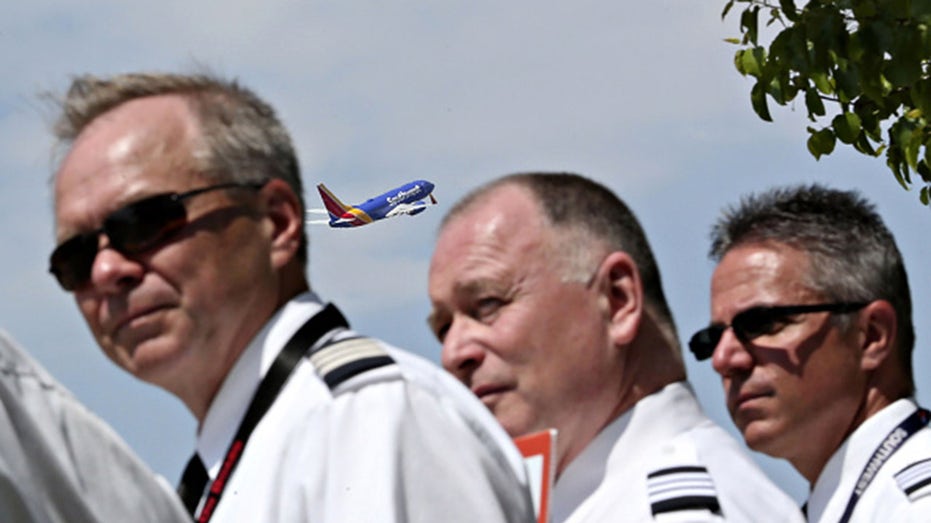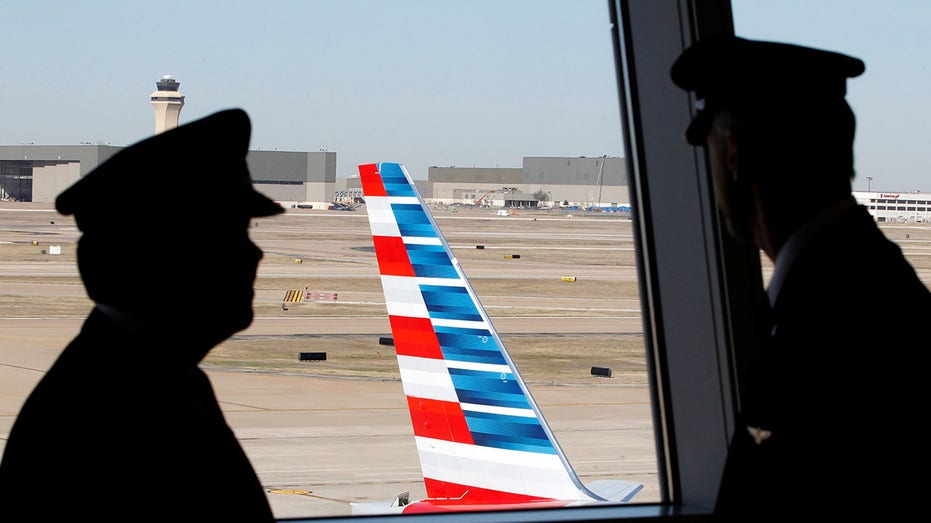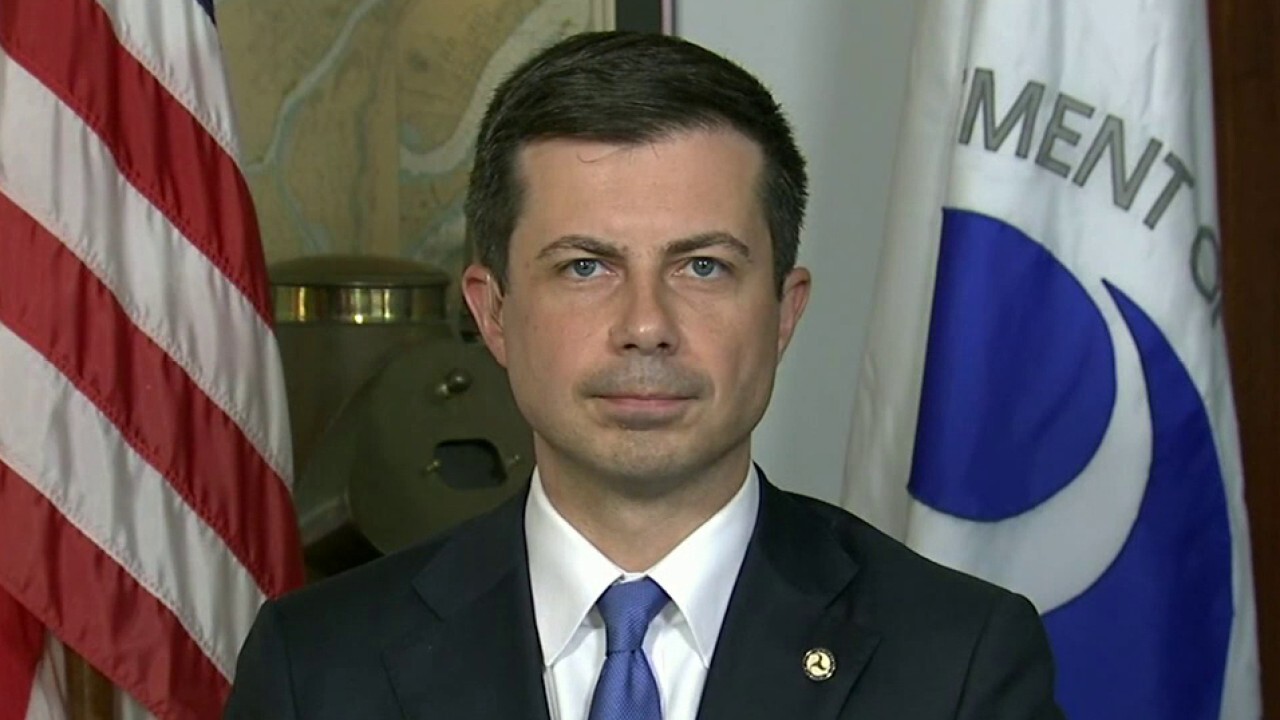Pilot fatigue remains high concern as carriers try to recapture revenue
Airlines like Southwest, American, Delta have dealt with issues of pilot fatigue
Pete Buttigieg: Answer to troubled skies is cultivating ‘new generation of qualified pilots’
Transportation Secretary Pete Buttigieg argues that the solution to canceled flights and pilot shortages is having "as many, as good pilots" ready to take baby boomers’ places.
Pilots are being "recklessly utilized" as airlines across the industry work tirelessly to recapture revenue lost during the pandemic, according to Pilots Association Communications Chair Dennis Tajer.
The issue is that airlines are scheduling too many flights for the number of trained and current pilots they have, Tajer told FOX Business. It's creating an uptick in pilots calling out fatigued or who have hit the legal limit of duty hours, he said.
Although this means that the flight will likely be delayed or canceled, pilots have a moral obligation to ensure that they're not flying when they're not fit for duty, he added.
Tajer has been the communications chair of the Allied Pilots Association, the labor union representing American Airlines pilots, for the past 15 years. He has also spent more than 30 years flying for American Airlines.
SCANDINAVIAN AIRLINES, PILOTS UNIONS REACH DEAL TO END 2-WEEK STRIKE
During the entire month of June, he says there was a fourfold increase in the number of fatigue calls from American Airlines pilots alone. On some days, there was a tenfold increase, which is a "warning sign that the system is under unnecessary duress," according to Tajer.
"This reckless utilization decreases reliability and can narrow the margin of safety," he said. "We are holding the line on the margin of safety, but a functional safety culture should not have such pressures."

Southwest Airlines pilots check their instruments in a 737 aircraft before a flight at Ronald Reagan Washington National Airport. (AP Photo/Mike Stewart / Getty Images)
Throughout the first two years of the pandemic, airlines received $54 billion in federal aid to help airlines avoid mass layoffs and bankruptcy.
Although the investment helped keep airlines from collapsing, the funds were also supposed to "ensure they were ready for the recovery by retaining and keeping pilots trained [and] current, so they could fly immediately as demand returned," Tajer said.
Instead, airlines convinced many pilots to retire early or take leaves of absence while passenger demand plummeted. Now, there are not nearly enough trained and current pilots, he added.
Consulting firm Oliver Wyman predicted that demand for pilots will outstrip supply in most regions worldwide between 2022 and 2024. The firm also estimated that this would continue to worsen over the next 10 years.
AMERICAN AIRLINES ENDING SERVICE IN THREE CITIES DUE TO PILOT SHORTAGE
In North America, where travel rebounded faster than in other regions, there is already a shortage of 8,000 pilots, and it is expected to grow worse throughout the next decade, according to data from the consulting firm.
Boeing, in its latest Pilot and Technician Outlook, said 602,000 will be needed to fly global commercial airliners, with 128,000 needed in the North American market.
Although Airlines for America, the trade association for the country’s leading passenger and cargo airlines, said its passenger carrier data did not reflect a lack of pilots, Regional Airline Association CEO Faye Malarkey Black said in May that the pilot shortage is worsening as travel rebounds.
Due to the worsening pilot shortage, 188 communities lost at least a quarter of their air service during the pandemic or the first half of 2022, according to Malarkey Black.
"While demand is strong, I want to acknowledge we are grappling with a real and worsening pilot shortage that is challenging us across the industry to fully meet demand," said Malarkey Black.
Tajer said some pilots are working the maximum number of hours that the Federal Aviation Administration (FAA) allows on a more regular basis.
FAA regulations require a minimum rest period of 10 hours between shifts, including eight hours of uninterrupted sleep.
Additionally, the duty period, which is the length of a pilot's day, can only range between 12 and 14 hours. Flight time for a two-pilot domestic crew during normal duty ranges between eight and nine hours. Both duty period and flight time depend on the time a pilot starts their day and how many flight legs they have.
The agency told FOX Business that it maintains these "strict duty and rest regulations for pilots to ensure continued safety."
Former Transportation Secretary: Our airlines need help
Former U.S. Transportation Secretary Elaine Chao discusses the Democrats' spending package as the country enters a recession as well as the travel surge amid worker shortages.
Tajer said consistently pushing against these minimums is risky.
"Just because you're legal by the FAA limits does not mean that it's safe or smart," he said. "The FAA maximums are a barbed wire fence. When you run up against that fence consistently, you are eventually going to get cut."
However, Kenneth Byrnes, chairman of the flight training department at Embry-Riddle Aeronautical University, told FOX Business that the issue is a bit more complex.
For instance, even with FAA regulations and airline plans in place to educate, mitigate and prevent fatigue, "it's difficult to develop limitations that are good for all pilots due to personal factors that impact each individual's fatigue level," he said.
Rest, stress, unhealthy lifestyle choices and certain medical conditions can impact fatigue and are difficult to quantify, according to Brynes.
JETBLUE, ALASKA TRIM SCHEDULES AS AIRLINES ATTEMPT SMOOTHER SUMMER
It is against federal regulations for airlines to allow an individual to continue working if they report fatigue.
Still, unions from various passenger carriers have sounded an alarm over this issue and are fighting for better schedules.
In April, the Southwest Airlines pilots union sent a letter to the carrier's CEO, Bob Jordan, saying the number of fatigue reports to the Aviation Safety Action Program (ASAP) and Southwest Airlines’ Fatigue Safety Advisory Group "have been climbing exponentially" since last summer and that there has been "no meaningful attempts by management to mitigate them."
"Our contention is that our schedules shouldn’t drive such a large increase in fatigue calls, nor should our Pilots be the absolute last line of defense in the fatigue error chain," Southwest Airlines Pilots Association President Casey Murray told FOX Business.

A Southwest Airlines plane takes off as representatives and pilots from the Southwest Airlines Pilots' Association demonstrate outside Chicago Midway International Airport in Chicago, Illinois, on May 18, 2016. (Daniel Acker/Bloomberg via Getty Images)
Murray said mitigations must be put in place and that "safety shouldn’t fall upon an already overworked pilot to recognize the level of his/her fatigue."
Likewise, Delta's pilot union spokesperson, Evan Baach, told FOX Business that fatigue reports at Delta had been steadily increasing throughout the pandemic recovery.
Even though Delta made recent schedule adjustments, Baach said pilots are still working a "record amount of overtime." By this fall, Baach said pilots will likely have flown more overtime in 2022 than in the entirety of 2018 and 2019 combined.
GET FOX BUSINESS ON THE GO BY CLICKING HERE
American, Delta and Southwest, which are among the U.S. carriers in contract talks with pilot unions, have maintained that their pilot schedules are well within federal limits, if not several hours under the limits.
A Delta spokesperson told FOX Business that "pilot schedules remain in line with all requirements set by the FAA as well as those outlined in our pilot contract."
American told FOX Business that the carrier "builds pilot schedules well within the federal limits, oftentimes up to several hours under the limit based on our contract."

Pilots talk as they look at the tail of an American Airlines aircraft at Dallas Fort Worth International Airport, Feb. 14, 2013. (Reuters/Mike Stone / Reuters Photos)
Additionally, American says the carrier "has specific policies and procedures in place to ensure pilots receive adequate rest" and that "pilots can request to be removed from a trip due to fatigue without penalty."
CLICK HERE TO READ MORE ON FOX BUSINESS
A spokesperson for Southwest told FOX Business that, since implementing schedule revisions in November 2021, it has "seen a significant and steady decline in the number of pilots calling in fatigued."






















